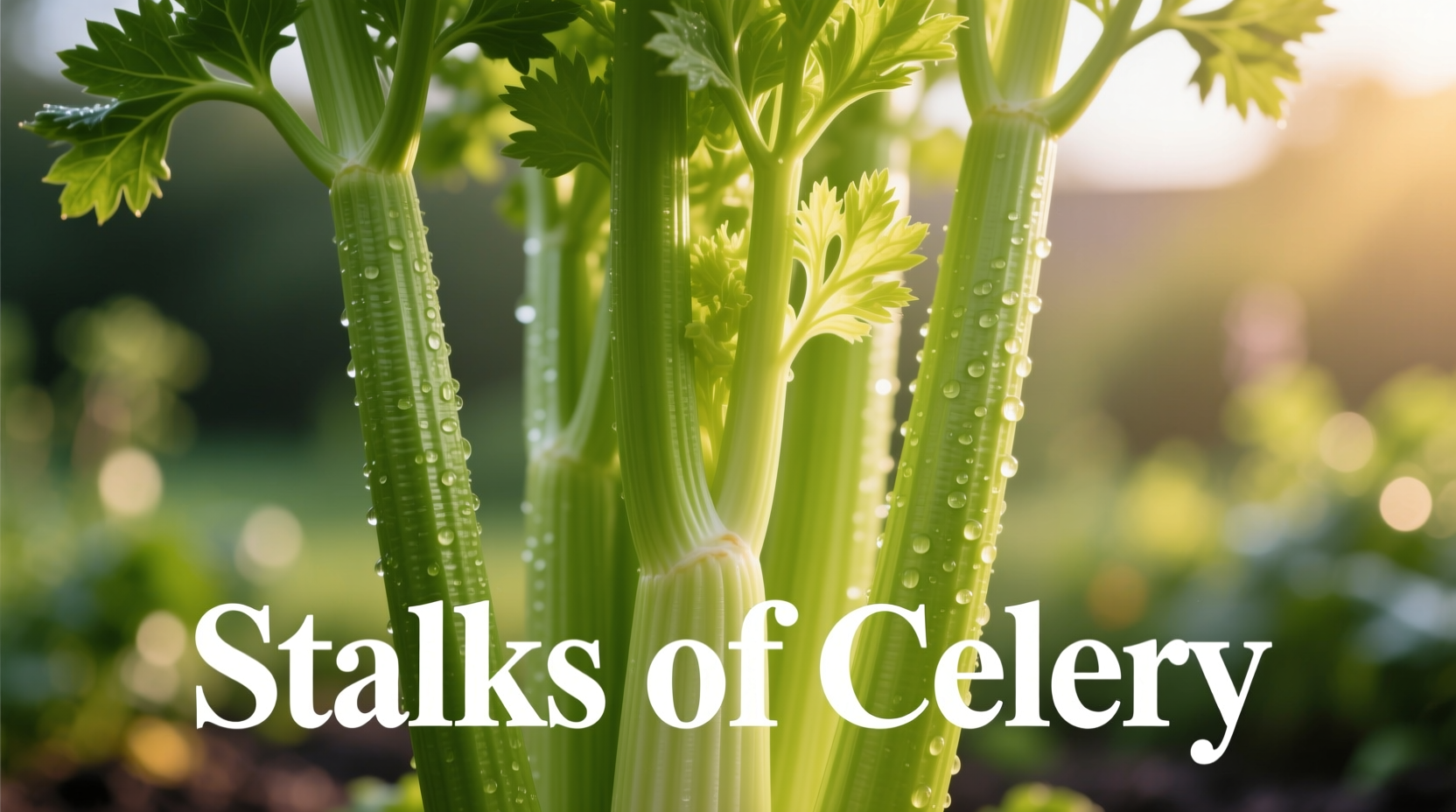Celery stalks are the long, crisp, fibrous edible stems of the Apium graveolens plant, forming the characteristic rib-like structure in a celery bunch. Each stalk (technically a petiole) contains valuable nutrients including vitamin K, potassium, and dietary fiber, with one medium stalk providing approximately 6 calories and contributing to hydration with its 95% water content.
Ever reached for celery in your refrigerator and wondered exactly what makes up those crunchy sticks? You're not alone. Understanding celery anatomy transforms how you use this versatile vegetable in cooking and nutrition. Let's explore everything you need to know about celery stalks—the powerhouse component of this common kitchen staple.
What Exactly Are Celery Stalks?
Despite common belief, what we call "celery stalks" are technically petioles—the leaf stems that connect celery leaves to the plant's base. These elongated, ribbed structures grow in clusters called "ribs," forming the familiar celery bunch. Each petiole features parallel fibrous strands running lengthwise, creating that distinctive crunch when bitten.
The celery plant (Apium graveolens) belongs to the Apiaceae family, sharing botanical relations with parsley, carrots, and fennel. While many confuse celery parts, the stalks specifically refer to the pale green to white elongated sections, distinct from the darker leaves and aromatic seeds.
| Celery Component | Physical Characteristics | Primary Culinary Uses | Nutritional Highlights |
|---|---|---|---|
| Stalks (Petioles) | Long, ribbed, pale green to white | Soups, stocks, salads, stir-fries | High in vitamin K, potassium, fiber |
| Leaves | Dark green, feathery texture | Garnishes, herb blends, pesto | Higher vitamin A and C than stalks |
| Celeriac (Root) | Bulbous, knobby brown exterior | Mashed dishes, roasts, purees | Rich in phosphorus and vitamin B6 |
Why Celery Stalks Stand Out Nutritionally
According to USDA FoodData Central, celery stalks deliver impressive nutritional benefits despite their low-calorie profile. A single 40g medium stalk contains:
- 6 calories
- 0.1g protein
- 0.3g dietary fiber (1% of daily value)
- 14mcg vitamin K (12% of daily value)
- 104mg potassium (2% of daily value)
The high water content (95%) makes celery stalks particularly valuable for hydration. Research from the University of California Agriculture and Natural Resources program confirms celery's role in supporting healthy blood pressure due to its natural sodium-potassium balance—approximately 32mg sodium and 104mg potassium per stalk.

Practical Kitchen Applications
Chefs value celery stalks for both flavor foundation and textural elements. The aromatic compounds in celery—particularly phthalides—release when cut or cooked, creating the base flavor in the French mirepoix (with carrots and onions) and Spanish sofrito.
When preparing celery stalks:
- Selection: Choose firm, upright stalks with minimal browning
- Preparation: Trim both ends, then snap or cut into desired lengths
- De-stringing: Use a vegetable peeler for older celery to remove tough fibers
- Storage: Keep in airtight container with damp paper towel for up to two weeks
Professional kitchens often utilize the entire celery plant. While stalks form the structural component in soups and stews, the leaves add finishing flavor, and even the base can enhance stock flavor. This zero-waste approach aligns with sustainable cooking practices documented by the James Beard Foundation.
Common Misconceptions About Celery Stalks
Many home cooks misunderstand celery's structure. The term "stalk" technically refers to the entire bunch, while individual sections are properly called "ribs." However, in culinary practice, "celery stalk" commonly describes the individual rib-like sections.
Another frequent error involves discarding celery leaves. Research from the Journal of Agricultural and Food Chemistry shows celery leaves contain significantly higher concentrations of antioxidants and vitamins than the stalks, making them nutritionally valuable components rather than waste.
Maximizing Flavor and Nutrition
To extract maximum benefit from celery stalks:
- Raw consumption: Pair with hummus or nut butters to enhance fat-soluble vitamin absorption
- Cooking technique: Add to soups during the last 10-15 minutes to preserve crunch and nutrients
- Flavor pairing: Complements apples, walnuts, blue cheese, and citrus in salads
- Preservation: Freeze chopped celery in olive oil for instant flavor base in future cooking
Understanding what celery stalks are—and aren't—transforms how you incorporate this vegetable into your diet. Whether you're building flavor foundations for soups or adding crunch to salads, recognizing the unique properties of celery stalks helps you make the most of this nutritional powerhouse.











 浙公网安备
33010002000092号
浙公网安备
33010002000092号 浙B2-20120091-4
浙B2-20120091-4